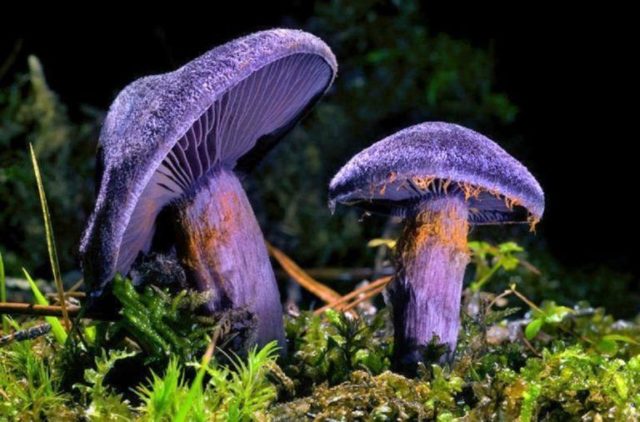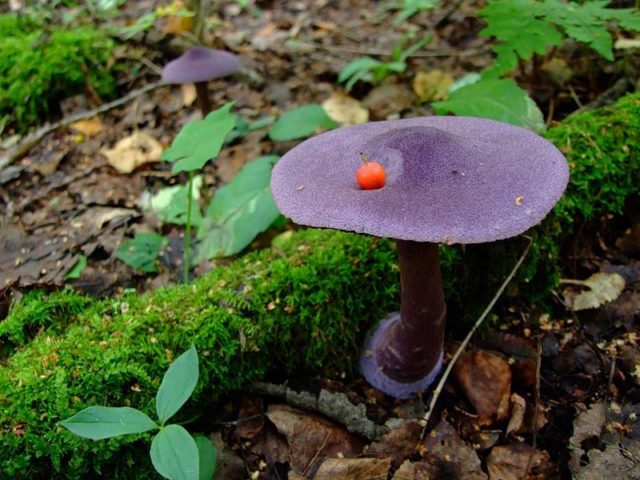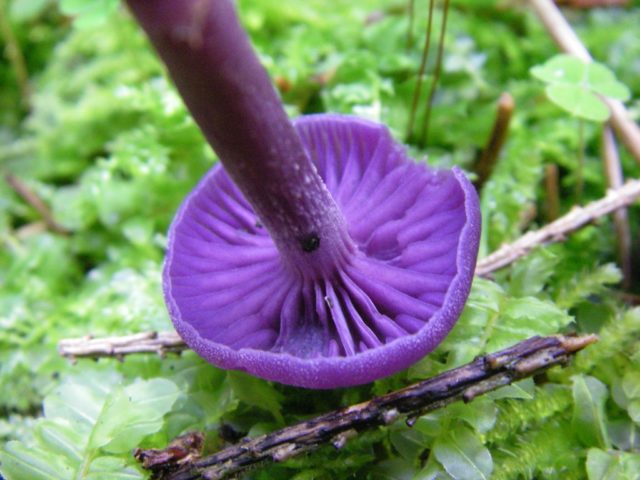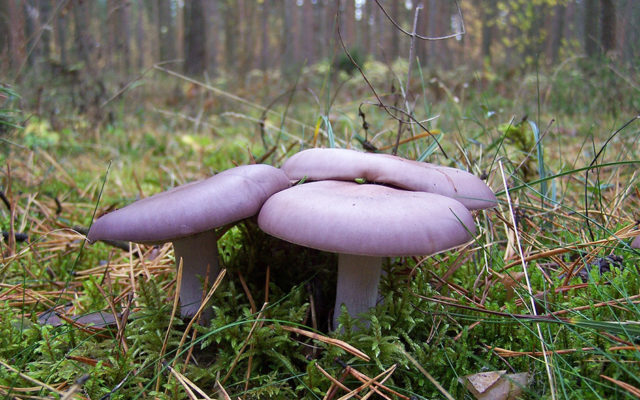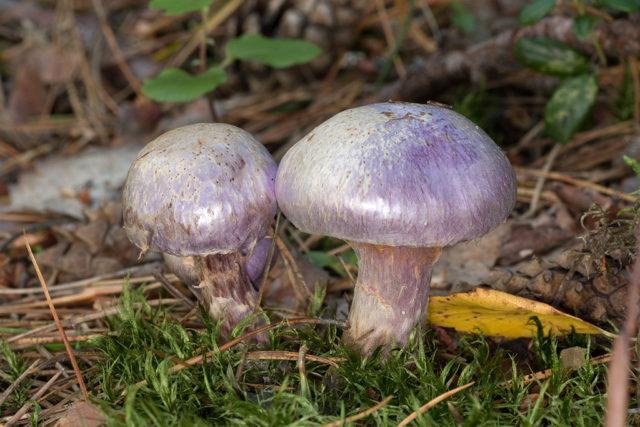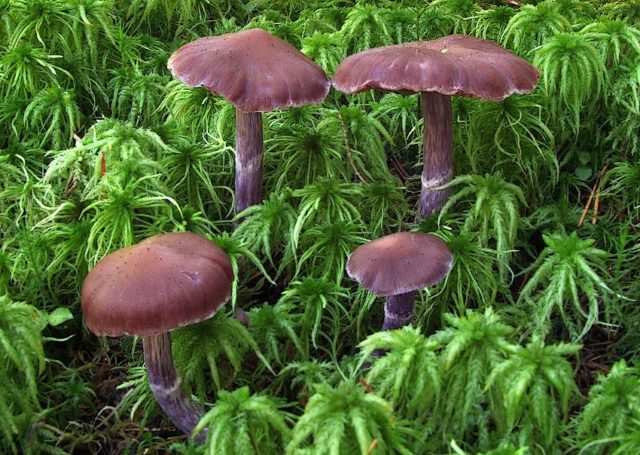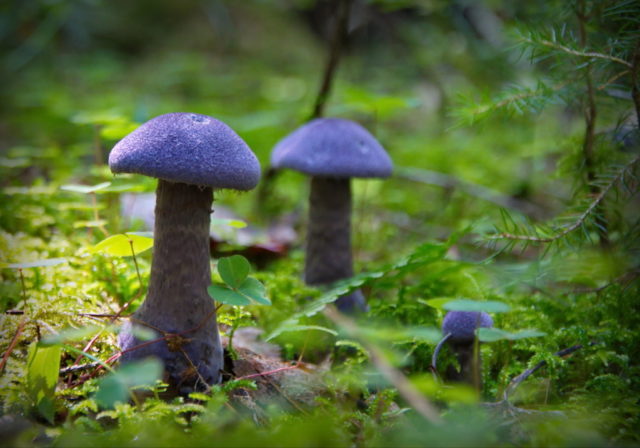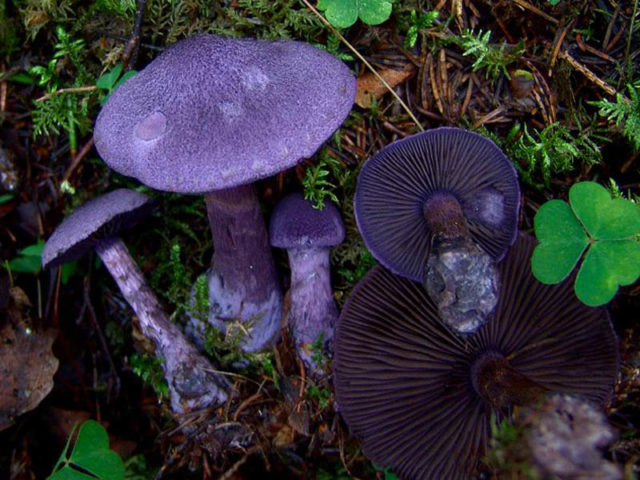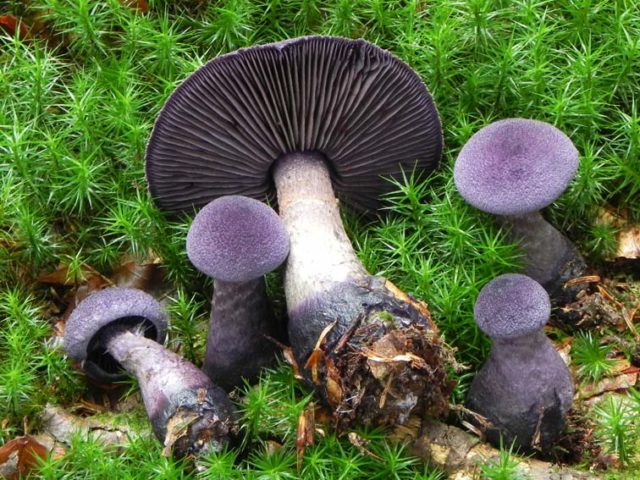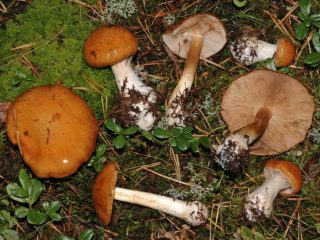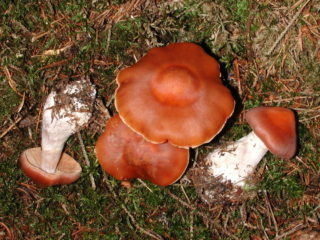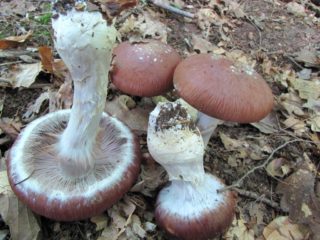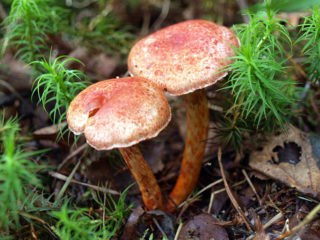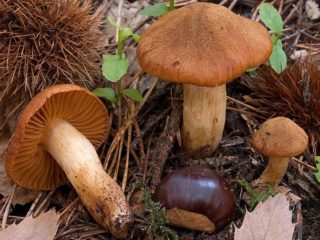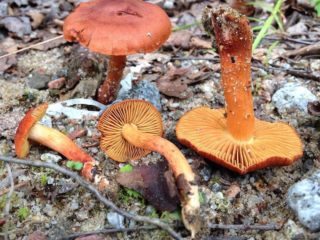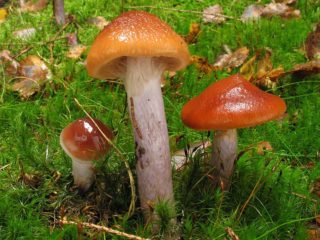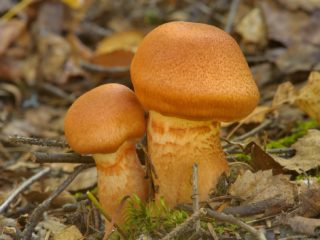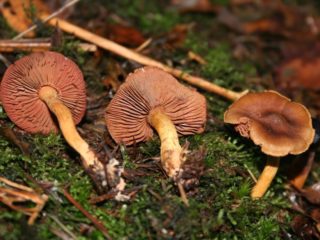Content
- 1 Description of the purple web spider
- 2 How and where does purple spiderweb grow?
- 3 Is purple spider web edible or not?
- 4 How to cook purple spider webs
- 5 Useful properties and contraindications of purple cobweb
- 6 Application of violet botanicals in pharmaceuticals
- 7 Interesting facts about purple web spiders
- 8 Conclusion
Purple webwort is a very unusual mushroom suitable for food consumption.It is quite easy to recognize it, but you should carefully study the description of the spider web itself and its false counterparts.
Description of the purple web spider
The mushroom, which is also called purple marsh grass or lilac cobweb, belongs to the genus Cobwebs and the family Cobwebs. He has a very characteristic appearance, which makes it easy to identify him in the forest.
Description of the cap
The cap of the purple web spider can reach 15 cm in diameter. In young fruiting bodies it is convex and half-spherical in shape; with age it straightens out and becomes almost flat, but with a large tubercle in the center. The most striking feature of the spiderwort is the beautiful dark purple color of the young mushrooms. Adult marshworts fade to almost white, but may retain a slight lilac hue.
A photo of the purple cobweb mushroom shows that the skin on the cap is fibrous and slightly scaly, on the underside it is covered with wide and sparse purple plates. If you break it in half, the dense pulp will acquire a bluish tint when broken. The fresh pulp emits a faint pleasant aroma.
Description of the leg
The thin stalk reaches only 2 cm in reach, but in height it can rise up to 12 cm above the ground. The upper part is covered with small scales; closer to the base there is a noticeable thickening. The photo of the purple web spider shows that the texture of the leg is fibrous, the same dark color as the cap.
Doubles and their differences
Due to its unusual appearance, it is quite difficult to confuse the purple spider web mushroom with others from the photo and description.However, the spider web has similar related species that require careful consideration.
Amethyst lacquer
The lilac or amethyst varnish has a strong resemblance to the marsh grass. This lamellar mushroom also has a bright purple color on its cap and stem, and is similar in outline and structure to the marsh mushroom.
However, you can distinguish the varnish, first of all, by its size; it is very small, its cap does not exceed 5 cm in diameter. In the center, instead of a tubercle, there is a depression; at the edges, the cap noticeably thins and becomes wavy.
The mushroom belongs to the category of conditionally edible, therefore, although it is undesirable to confuse it with the cobweb, it is not dangerous.
Purple row
The purple rower, an edible lamellar mushroom, has a certain resemblance to the cobweb. The varieties are similar to each other in the shade of the cap - young rows are also bright purple on both the upper and lower lamellar sides, and gradually fade with age.
But you can distinguish the fruiting bodies from each other by the stem - in the row it is thick, dense and noticeably paler than the cap. The row is also suitable for consumption.
Goat's web
You can confuse the marsh grass with a related species - the goat's web, or goat's web. The similarity between the mushrooms is that their caps have the same structure - at a young age they are convex, at an adult they are spread out and have a tubercle in the middle part. Young goat webworts are also purple in color.
However, with age, the fruiting bodies of the goat's web spider become more gray-gray, and the plates on the lower part of its cap are not purple, but rusty-brown.Another difference is the unpleasant odor emanating from the goat's web - mushroom pickers claim that it smells like acetylene.
Brilliant web spider
Under certain circumstances, the marsh grass can be confused with its poisonous counterpart - the brilliant cobweb. Both mushrooms have at first a convex and then an outstretched cap with a tubercle in the center, a long thin stalk and a lamellar underside of the cap.
The main difference is the color. If the purple marsh grass has a rich lilac color, then the cap of the brilliant spider web is reddish-brown or chestnut with a faint purple tint. The brilliant spider web is inedible and poisonous. If the mushroom found is more similar to the description, then it is better to leave the find in the forest.
How and where does purple spiderweb grow?
In terms of its distribution, the purple marsh grass is found throughout almost the entire world. It grows in Europe and America, Japan, Great Britain and Finland.
In Russia, the mushroom grows not only in the middle zone, but also in the Leningrad and Murmansk regions, near Novosibirsk and Tomsk, in the Chelyabinsk region, in the Krasnoyarsk Territory and in Primorye. You can find the edible mushroom purple cobweb in coniferous and mixed forests, mainly near pine and birch trees. It grows mainly solitarily, but sometimes forms small groups. The main fruiting season is in August, and the mushroom can be found until October in damp and shaded places.
Is purple spider web edible or not?
Purple cobweb from the Red Book is an edible mushroom with a very pleasant, delicious taste. It is suitable for all types of food processing and does not require special preliminary preparation.
How to cook purple spider webs
Pribolotnik is rarely fried and added to soups - much more often it is salted or pickled. According to reviews from mushroom pickers, it tastes much better when cold. But before any processing it is necessary to carry out initial preparation.
The preparation consists of clearing the marshland of forest debris, rinsing it in cold water and removing the skin from its cap. It does not require soaking, since there are no toxic substances in it, and there is also no bitterness in the pulp. Immediately after cleaning, it is immersed in salted water and boiled for an hour.
Pickled purple spider web
A simple recipe for preparing the mushroom suggests marinating the purple boletus for further storage. It's very easy to do this:
- First, put 2 liters of water on the fire and add 2 large spoons of salt, sugar and vinegar, as well as 5 cloves of garlic, 5 peppercorns and a bay leaf.
- After the marinade boils, add 1 kg of boiled botanicals to it and keep it on the fire for another 20 minutes.
- Then the mushrooms are placed in sterile jars prepared in advance and filled to the top with hot marinade.
The blanks are covered with lids, allowed to cool under warm blankets, and then put in the refrigerator for long-term storage.
Salty purple spider web
Pre-boiled mushrooms can be pickled - the recipe is very simple and accessible even for beginners. In small layers, purple marsh grass should be placed in glass jars, generously sprinkling salt on each layer so that in the end there is a layer of salt on top of the jar. If desired, you can also add a little garlic, dill, pepper or bay leaves.
The filled jar is covered with gauze or a thin cloth, and pressed on top with a heavy weight. After a couple of days, the juice will be released in the jar, which will cover the mushrooms entirely, and after another 40 days, the marsh grass will be ready for consumption. During the salting process, you need to remove the pressure from time to time and change the fabric or gauze so that it does not become moldy from moisture.
Useful properties and contraindications of purple cobweb
The rare mushroom, violet primrose, is not only tasty, but also very healthy. Its pulp contains in large quantities:
- B vitamins;
- copper and manganese;
- zinc;
- vegetable protein.
Pribolotnik has pronounced anti-inflammatory properties and can strengthen the immune system. It also benefits the heart and blood vessels, in particular, it reduces glucose levels and prevents the development of diabetes.
There are not many contraindications for the mushroom, but its use is not recommended for allergies and severe diseases of the gastrointestinal tract, kidneys and liver during exacerbations.It is better for pregnant women and nursing mothers to avoid spider webs, as well as any other mushrooms; mushroom pulp should also not be offered to children under 7 years of age.
Application of violet botanicals in pharmaceuticals
It is necessary to mention the medicinal properties of the rare mushroom. Thanks to the vitamins and other valuable substances in its composition, purple marsh grass is used to create antifungal drugs and antibiotics. You can also find bogwort as part of medications that help with hypoglycemia - the mushroom lowers blood sugar levels.
Interesting facts about purple web spiders
Not all mushroom pickers have heard of the purple web spider. This is partly due to the rarity of the Red Book mushroom. But another reason is that the bright colors of the marsh plant make many people mistake it for a poisonous mushroom and avoid it.
Purple marsh grass is used not only in cooking and medicine, but also in industry. Environmentally friendly paints are made using marshland. The natural dye in the mushroom pulp is completely safe, but is highly durable.
The purple mushroom is called cobweb mushroom because the young fruiting bodies on the underside of the cap are covered with a continuous dense cobweb. With age, this blanket breaks and disappears, but even in adult marsh-dwellers you can sometimes notice its remains on the edges of the cap and on the stem.
Conclusion
Purple webwort is a very rare, but beautiful and tasty mushroom.Finding it in the forest will be a real success, but mushroom pickers throughout Russia have a chance, since the mushroom is distributed everywhere.
